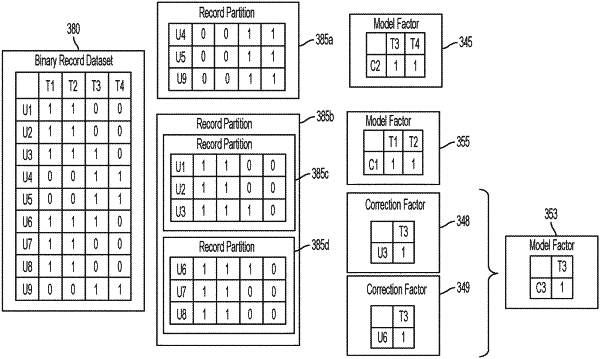| CPC G06F 16/285 (2019.01) | 20 Claims |

|
1. A method performed by one or more computing devices, the method comprising:
accessing a set of binary records, wherein each record in the set of binary records includes multiple data elements corresponding to binary traits;
identifying, in a first record from the set of binary records, a first group of data elements that each include a first value, wherein each data element in the first group of data elements corresponds to a respective binary trait;
generating a candidate description function that describes the respective binary traits, wherein the candidate description function includes a model factor that describes the first group of data elements of the first record;
responsive to determining that a second record has a second group of data elements corresponding to the respective binary traits, wherein each data element in the second group of data elements includes the first value, modifying the candidate description function to indicate that the model factor further describes the second group of data elements of the second record;
responsive to determining that the second record has an additional data element corresponding to an additional binary trait that is excluded from the respective binary traits, wherein the additional data element includes the first value, modifying the candidate description function to include a correction factor that describes the additional data element of the second record;
generating a data summary cluster based on the modified candidate description function, wherein the data summary cluster includes a compact representation of the respective binary traits corresponding to the first group of data elements and the second group of data elements; and
providing the data summary cluster to a trait expansion query system that is configured for modifying the data summary cluster to identify an expansion trait associated with a subset of the set of binary records.
|